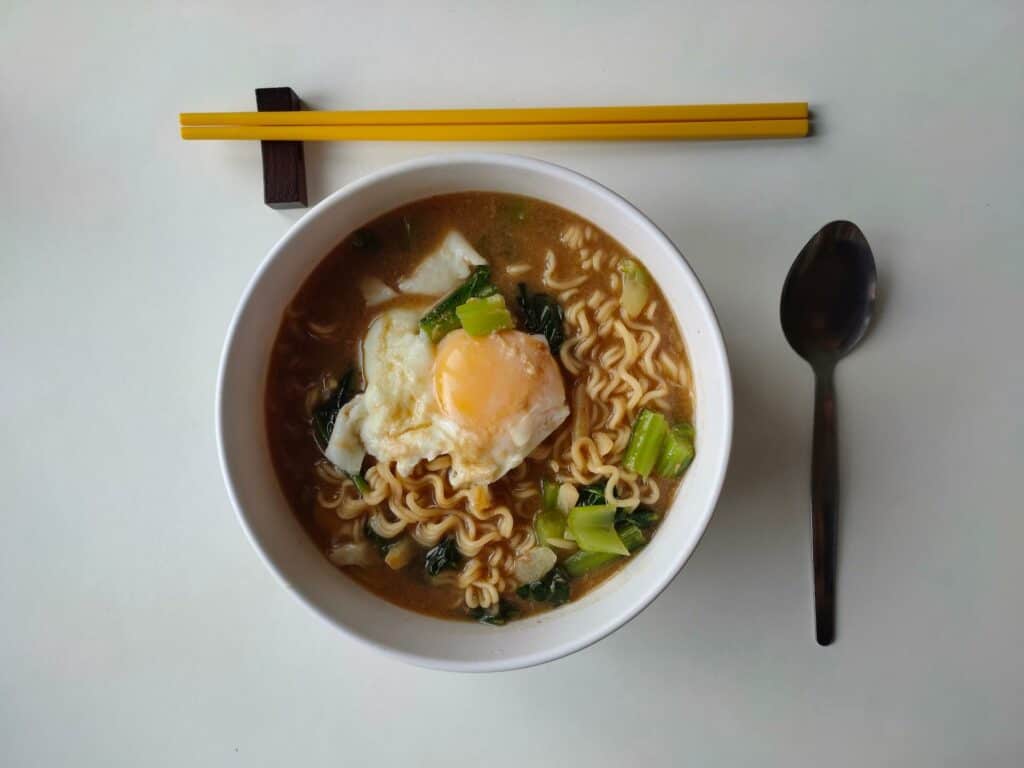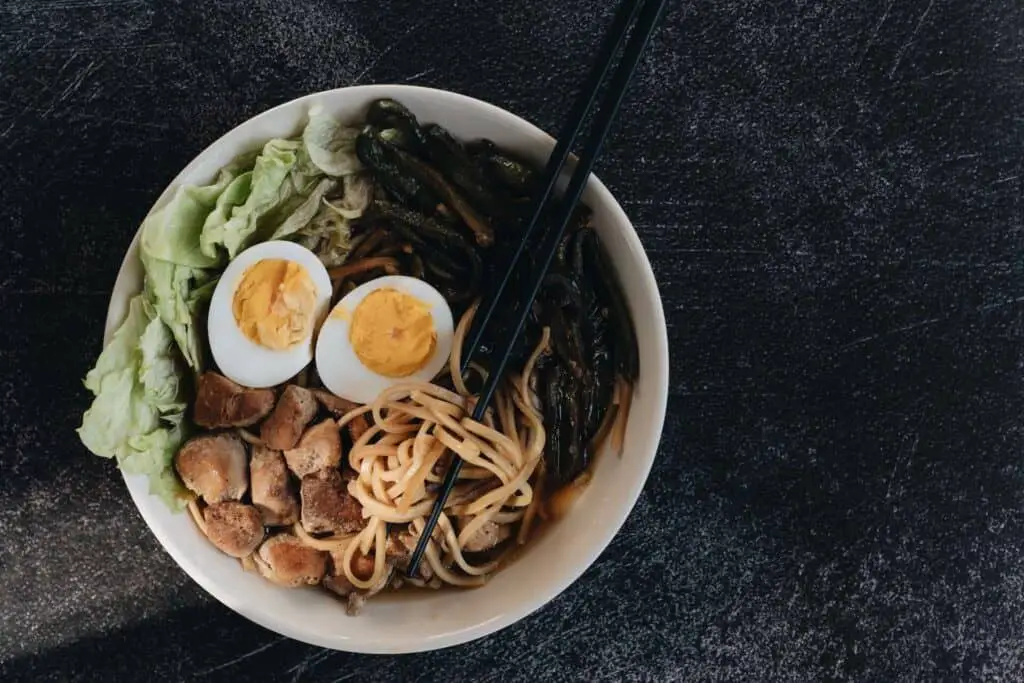Ramen noodles can vary in width and length, and if you are one of those people who like to do thorough research on what you are eating, the following question might arise – “How long are ramen noodles?”.
First of all, instant and traditional Japanese ramen noodles are two completely different things. Instant ramen dishes follow a standard, and each noodle is sixteen inches (forty centimeters) long. On the other hand, the length of traditional ramen noodles depends on what noodle cutter is used.


Instant Ramen Noodles Follow a Set of Standards When It Comes to Size
Whether you are eating Maruchan ramen or any other available on Amazon, the proper way to measure the length of a single noodle is after cooking. If the noodle block in the packaging has not been crushed beforehand, each noodle should be approximately sixteen inches (forty centimeters) long. Of course, there are manufacturers who don’t follow these standards, like the Sapporo brand. Here are some examples:
- Maruchan Ramen – Fourteen inches (forty centimeters)
- Sapporo Ichiban Ramen – Thirteen inches (thirty-three centimeters)
- Asha Healthy Ramen Noodles – Thirteen and a half inches (thirty-four centimeters)
- Nissin Instant Ramen Noodles – Twelve inches and a half inches (thirty-two centimeters)
As you can see, the difference is not significant, and it does not affect the weight and the nutritional value of these products. They all have pretty much the same level of carbohydrates and sodium. However, the main reason why they have similar lengths is because of the packing method. They are completely dried and compressed into a small block. This wouldn’t be possible if they were as long as spaghetti.
The Length of Traditional Japanese Noodles Depends on the Style of Preparation
Authentic Japanese ramen soup is prepared with homemade noodles. Traditionally, you would make thin layers of dough and slowly cut noodles. However, nowadays, noodle cutters have replaced knives, and many interesting shapes have been invented. As a result, many different lengths of noodles have been introduced as well.
The length most depends on the thickness of a noodle, and here is a general overview of the most popular proportions:
| Very Thin | Tonkotsu (also known as Hakata ramen, Naruto probably eats this one) is made with very thin noodles. They are the shortest ones, and they rarely exceed twelve inches (around thirty centimeters) |
| Thin | Kumamoto and Tokyo ramen are made with thin noodles. The length is almost the same as instant ramen, which means that it ranges between twelve and fourteen inches (thirty to forty centimeters) |
| Standard | The definition of “standard” depends a lot on what part of Japan we are talking about. However, traditional noodles available in Asian supermarkets across the Western world are usually around seventeen inches (forty-five centimeters). These noodles can be used for pretty much any ramen recipe, and they are the most frequent ones used in restaurants |
| Thick | Shirakawa ramen is probably the most famous one made with thick noodles. They are longer and usually exceed twenty inches (fifty centimeters) |
| Very Thick | Kitakata and Sano ramen are the most popular recipes that use very thick noodles. There isn’t quite the exact measurement for these noodles since they are rarely used, but they often exceed twenty-two inches (fifty-six centimeters) |
As you can see, the thicker noodles are longer, and there is a perfectly good reason for that. There is a traditional saying – “the thinner the broth, the thicker and longer the noodles.” The thin broth has a lot of subtle flavors that a thin noodle cannot absorb. Longer and thicker noodles go great with recipes that are more based on vegetables and spices, while the thinner and shorter noodles are usually found in recipes with meat and eggs.

The Length of the Noodle Can Also Depend on the Shape
With the introduction of noodle cutters, professional chefs have come up with the idea of cutting noodles in different shapes. Primarily, it affects the decoration, but there can also be some slight differences in taste. Of course, different shaped noodles have different lengths as well:
| Circular | Circular is the most frequent shape nowadays. Pretty much all instant ramen noodles are shaped like this. When it comes to thickness and length, they are all either standard or thin and can be used in almost any recipe. |
| Square | Square-shaped noodles are either thick or very thick (as a result, long as well,) and they are known to absorb most of the soup and the flavor. They work great with thin broths and usually have a highly chewy texture. |
| Short rectangular | In general, rectangular and square shapes seem to absorb more soup and flavor. Short rectangular noodles have become quite popular among ramen chefs since they can be used with any recipe. They are short but have a certain level of thickness, which means that they can be used in both thin and thick broths. |
No Matter What Type of Noodles You Have In Your Local Restaurants or Markets, Try Ramen if You Haven’t
There is no denying that different types of noodles can affect the flavor, but for a person who is not so familiar with ramen, it will be almost impossible to notice these subtle differences. Of course, traditional and instant ramen are two completely different things, but the difference in flavor doesn’t come from noodles but from the style of preparation and ingredients. Hence, in the end, if you are a person who wants to experience this lovely traditional delicacy, it won’t matter if the noodles are circular and short or rectangular and long. Everything will be delectable when you add the right toppings and spices.